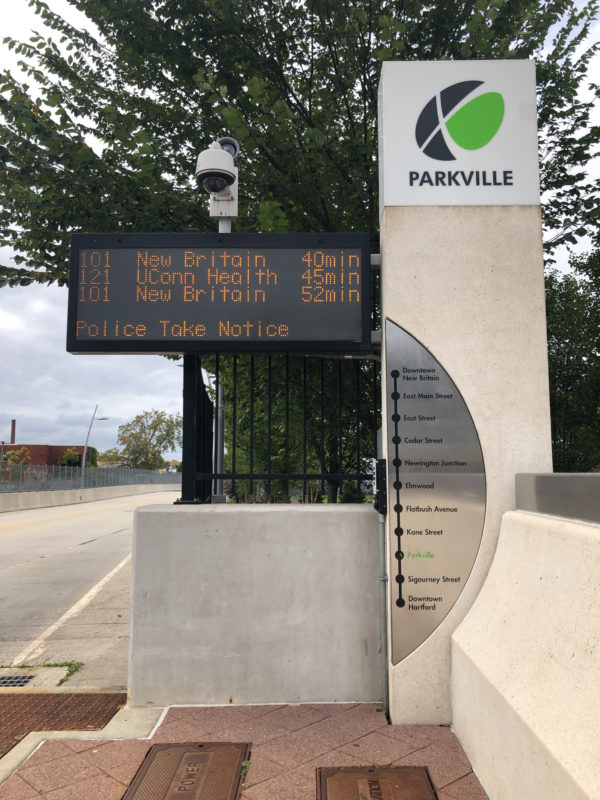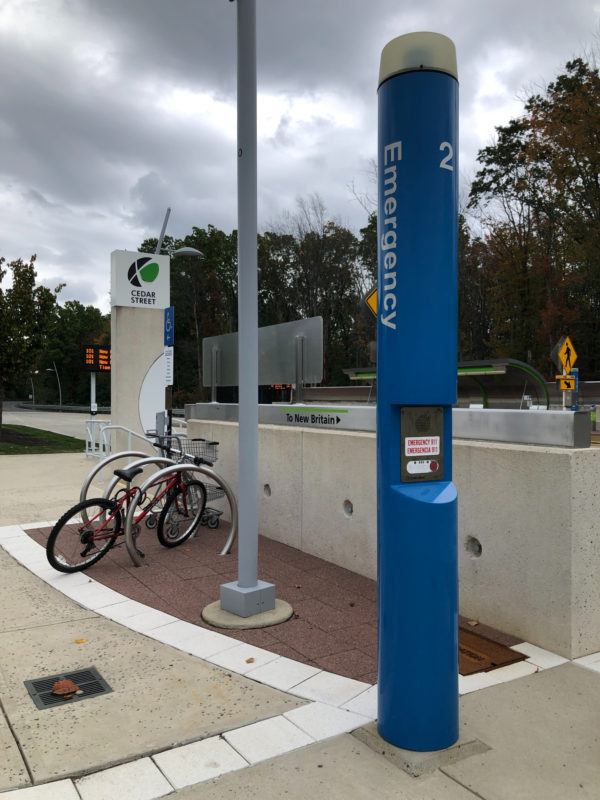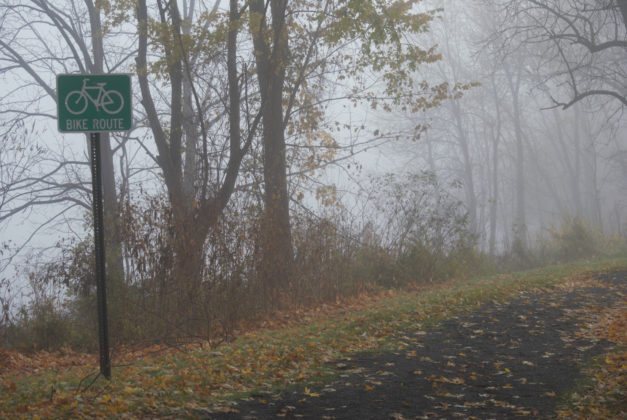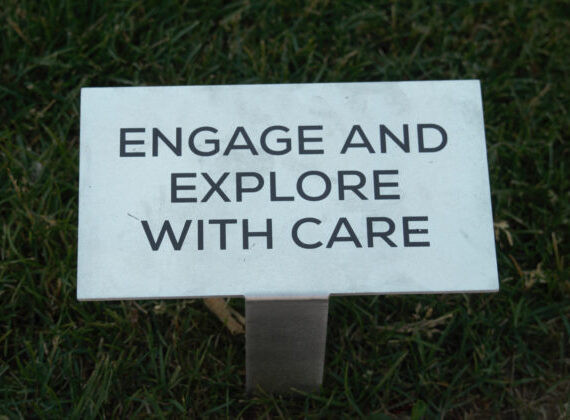As far as individual actions go, ditching the car is the second most impactful thing you can do to reduce your carbon footprint. Many people say they want to do it, but then don’t. This series will provide guidance and answer questions so that those who want to do meaningful work in healing the planet can begin living their values through choosing to be car-free or car-lite.
Consider this the miscellaneous section, the things people say hold them back from going by something other than private motorized vehicle.
CAN LADIES DO ANY OF THIS?!
No amount of data will change the minds of those who have been socialized to be scared of stranger danger, even though we know it’s primarily acquaintances — not strangers — who pose any kind of a threat in the area that this series is focused on.
I will offer purely anecdotal evidence, and only a brief overview* to answer this question, and obviously, what works for one might not work for everyone.
Nearly all of the stress and risk that I have experienced while commuting is related to bad infrastructure and bad drivers — not dudes lurking in the bushes.
When strange men holler at me, I usually cuss them out. It’s a reflex, and it is a valid response. The words I use are not kind. I have not been put here to endure the bullshit of others. So far, it has worked well enough. They usually shut right up, sometimes apologize, and they don’t follow me. They are informed in clear terms that this is not an acceptable way to speak to women they don’t know. It is an occasional annoyance, but nothing on the level of motorists running red lights or people not clearing snow from their sidewalks.
When I feel less confrontational, I keep my earbuds visibly in so they understand that I’m not going to engage with their trash. There are people in this world, though, who don’t know that headphones are the universal signal for “leave me alone.” You can keep earbuds in without playing music, if you’re worried about remaining alert. There’s also volume control.
It helps to have the mindset that if someone were to cross a line, you would not hesitate to fight them. I’m not suggesting this creates a force field — only that you will become more comfortable the moment you can envision yourself not being a passive victim.
If carrying rocks in your bag helps you get to that space, so be it. As Ani DiFranco says, “every tool is a weapon, if you hold it right.”
Work on that nonverbal communication. Know how to stare someone down. If you’ve been socialized to worry that some rando might think you’re a bitch, get that out of your system.
As a sidenote, I have not experienced anything particularly creepy or threatening while on a train, subway, bus, bicycle, or while walking; HOWEVER, back when I was a youngster — let’s say in the 18-22 range — I was driving on I-91 back from Middletown. There was a younger passenger in my car. We both appeared at least 5-10 years younger than we were. A man drove aggresively alongside me and would not let me by. It was annoying since I was in the left lane and not where I needed to be. My passenger alerted me to the fact that this driver — probably in his 40s — was masturbating while leering at us. For several miles he would speed up or slow down so that I could not move over. I can’t even bring myself to put into writing the speed I finally hit to pass this dangerous asshole.
[Go watch a kitten video or something to heal your brain, then come back]
Other than that, is there really anything specific to women that interferes with active transportation? Boycott underwire torture devices? That’s all I got.
*In the near future, I will be publishing a weekly series about my own mobility in the region, and there will be more opportunity to dive into the details, and hopefully never revisit that memory of the jerk on I-91.
KIDS RUIN EVERYTHING
Surely moving children out and about in the world is easier than moving one out of your birth canal. A person consents to being expanded, to being torn, to having intestines removed and stuffed back in. . . but the challenge is when it comes to getting that offspring to piano lessons?
If you chose to be a parent and expected it to be easy, you might want to check yourself. Parenting is hard. Parenting is — for most of us in Connecticut, for the last 40+ years — a choice. Adulting is also hard. Life is hard. We all have struggles and this is not a competition to see who has it the worst. There is no martyr award. Just about every choice involves some kind of compromise. There are always consequences.
Why do we think everything has to be all or nothing? Make the best possible choice that you can at the time, minimizing harm to others and elevating equity. Decision paralysis is not necessary. Save the rest of us from your confessions of guilt or your “I would do this, but…” discussions. (Beginner’s Kit: Listen to this episode of The War on Cars)
This belief that one can’t be car-free or car-lite when raising a family seems very tied to a particular economic class and its norms. Overscheduling offspring with extracurriculars is not mandatory nor necessarily to anyone’s advantage. It is worth repeating that simply because you don’t know anyone riding the bus to drop their kid off at preschool, that does not mean other parents in the area are not doing this. It means you either do not ride the bus or do not live in a neighborhood experiencing economic disinvestment.
Consider making a list of what you (and the rest of your family) does during a typical month. Get rid of the “but what if…” mentality, and focus on what you normally do. In a typical month, is the school calling you to come get your kid (because they’re sick or unruly or whatever) or does that happen once a year? Get realistic about what is needed…and for some families, yes, you might be getting called to collect junior every other day. That’s not most families though.
Then, look at the transportation options in your area: walk, bike, scoot, bus, train, carpool, borrow friend’s car, rent a car, hire a taxi.
Match these with the different activities. You might be able to walk to the library on Saturday and bike along with the kids to school, but for groceries, the bus works out better. Why would you expect a hammer to work when a screwdriver is needed? Use the best tool for the job. In urban areas, the private automobile is often the worst tool for the job, and there are many attempts to communicate this with drivers: insurance rates, parking fees, parking not being treated as a God-given right.
You can think of your existing car as ice cream. It’s not the worst if treated as a treat; it’s hard to make the argument that daily consumption is healthy or necessary.
Maybe you can’t kick it to the curb entirely right now, but you might as well train for this possibility, otherwise when the kids are grown enough to manage their own mobility, another bunch of excuses will move in to take their place.
Again, and I cannot say this enough: look to see how families outside of your social circle get their kids here and there.
THE BUS IS TOO HARD
It’s fair to say that public transportation in Greater Hartford, and Connecticut in general, has much room for improvement. If you’re someone in that middle income bracket and find yourself making this complaint, you are officially obligated to advocate for expanded bus service. No excuses.
Some of us do have commitments that are hard to get to by bus, or the bus technically serves that area, but not at the time you need to be there. I have experience with this one — the bus will get me to the venue, but there is no service when the activity ends and it is too far to walk home that late in the evening when I’ve already had a full day. Biking is safe for half the trip, then challenging — going by bars on a Friday night is unnerving. Taking a longer, safer route home is possible if I’m willing to bike up a hill. Sidewalk riding is only safe if done slowly and paying attention to every single driveway, and that still does not eliminate crossing intersections. Do you see how this can be a load of excuses? How often do people say “the drive is too much trouble, I’m going to opt out of going”? From the conversations I hear, most drivers are still showing up, but with lots of complaining about traffic, construction, detours, parking, etc. The point is, why do people accept a level of pain while driving that they won’t when it comes to other modes?
But back to this “the bus won’t work for me” scenario. Ask yourself these questions:
- Does this commitment involve anyone else from area with whom you could carpool in one or both directions?
- Can you load bicycle on bus and ride home when bus service gets sparse or non-existent?
- Is there another bus in the area that you might not have considered because it’s a few blocks away?
- Can you bike both ways?
- Can you get a taxi — professional or gig economy — to drive you all or part of the way?
- We do live in the future. Can you join this activity by Zoom or other Zoom-like programs?
Always a good question: is this a commitment you want to keep? Maybe you joined a knitting group five years ago, it’s been real, but it’s time to move on. Maybe attending an activity monthly rather than weekly is a better fit.

I’ve heard that there are drug users hanging out at some bus stations and on the buses. That seems unappealing.
This has been mentioned to me a few times, and without being dismissive, it’s necessary to gain perspective.
Let me tell you how many times I have seen people shoot up and then drive onto I-84.
Countless. That’s how many.
I’ve watched people crawl into drivers’ seats, intoxicated — in the daytime. If you are in a car, you are surrounded by people driving under the influence, not to mention while distracted by cell phones, etc. It is far more destructive to the general public for people under the influence of drugs or alcohol to be in cars than to be using public transit. So, if we are going to talk about the nuisance of open drug use in/around public transit facilities, we need to first address what is a more pressing danger to everybody: driving under the influence.
This is complicated. On the one hand, this is a health issue. We can ask why people are sniffing on the bus or shooting up in the station, and why there is not a more appropriate place for them to do so. If people can go to a bar and know what dose of alcohol they are getting poured, why can’t we do that for people using other substances? It seems like the most humane option.
On the other hand, yes, what the actual fuck? Earlier this year I went to one of the CTfastrak stations and noticed that out of the dozen people there, I was the only person not actively shooting or smoking something. This was late morning. While it did not feel like a dangerous situation for me — they were in their own world, oblivious to me being there — it was uncomfortable. It helps to sort out situations by “is this unsafe or just uncomfortable?”
I contacted CTtransit later in the day after I had completed my trip. They responded within a few days.
Their response included: “Unfortunately, since the stations are not policed 24 hours, the vagrants know when to come and do their illegal activities, and when to disperse” and “I always tell our customers to please be our eyes and ears because we won’t be able to see or hear everything, but together, we can ‘hopefully’ right the wrong. It will take time but each step is a good one.”
Later, I heard from the Connecticut DOT: “Thank you for reporting the below incident. It is unfortunate that you were exposed to such unfavorable activities. We will review the cameras and conduct a thourough investigation on the matter. In addition, we are working on establishing a strong law enforcement presence at most of our stations, which will help ensure that the events described below never happens again. Please continue to report any such incidents in the meantime, and we will be sure to address them as they come in.”
Do I think a “strong law enforcement presence” is the way to fix this? No, and I will get to that in a minute, but I’ve included these responses as a way to show that those in charge of the stations are aware, but also should hear directly from anyone else who notices problems.

There are cameras everywhere at the CTfastrak bus stations and on the buses. The Fastrak stations also have emergency call boxes. You can stand directly next to one or more of these features if it makes you feel better.
You can also time your arrival so your wait is minimized. If you are not comfortable around people dealing with this health problem, board through the front of the bus and sit in that area, rather than the back where it’s more likely you would encounter people drinking or using on the bus. (No, people are not always drinking or sniffing on public transportation. Yes, it absolutely does happen.)
As a personal anecdote, none of these riders, have confronted me or caused me problems. The most grief I’ve experienced from other passengers has been folks not wearing masks on the bus during the pandemic and the occasional manspreader who does not know how to share his space on a crowded bus.
If it’s being asked for money that you’re worried about, a firm, but polite “no thank you” goes a long way. You can also perfect your non-verbal communication, which I recommend to anyone opting to travel outside of a private cage. Look less approachable. You know…be a New Englander.
There are other ways to mitigate the issue of people having negative gatherings at bus stations. The station that has the most issues is within a five minute walk of several popular businesses, including a brewery, food hall, and axe-throwing venue. The property and business owners could take an interest in the neighborhood by actively encouraging their patrons to use public transit; besides the bus station, there is another local bus route here. Nevermind how this would improve traffic flow in the area — particular on nights and weekends — and save the business owners grief of figuring out parking concerns, even a small increase in their patrons using the bus would mean an addition to foot traffic. As an aside, the fact that alcohol-serving establishments rarely promote public transit, walking, or biking for their clientele is wildly irresponsible. Impaired driving actually threatens the safety of others.
Why does foot traffic matter? More positive use equals less negative use. In the Fair Haven neighborhood of New Haven, activists have begun to occupy a bar’s parking lot at night after being fed up with the amount of violence happening in that space. As one of the residents explains, “Sometimes the best thing you can do with a place that’s a problem is fill it with something good.”
When we know about a problem, we need to try to fix it…not throw up our hands, decide everything is terrible, and get back into our damn cars! Why? Because there are many folks in the community who would benefit from improved conditions, who do not have the luxury of sliding back into their EV, who do not have the time after working two jobs, to then get on the phone with legislators, engineers, business owners, and the bus company demanding better conditions. Why shouldn’t they be able to take their kids to school on the city bus without having to expose them people engaged in self-harm? If you have the time — and trust, if you are reading this, you do — be part of the solution. Avoiding a situation, not because it’s dangerous but because it’s uncomfortable or inconvenient, means taking another pair of eyes away from that bus station. You have essentially made it less comfortable and possibly less safe for a fellow rider. The same goes for walking. When people complain that Hartford’s streets are not as bustling as those in Manhattan or Boston, I ask what they are doing, personally, to fix that. Are you putting yourself out there? Are you inviting friends? It’s one thing to “put your body on the line” at a protest, which is generally a safe environment. It’s another to do this day in and day out, when not surrounded by people holding signs. This inability to separate comfort from safety, convenience from possibility, fires me up because it feels absolutely central to white privilege. Are you a woman who wants to see more women walking or cycling? Go be one, and stop waiting for someone else to do the heavy lifting.
Next week, the second part of miscellaneous tips for going car-free in Greater Hartford. This will include spontaneity and cargo.


Jim Head
Great article – I really don’t have anything to add. I’m a happy non-martyr among the car-lite crowd (1 car family of 4). My cargo bike does a lot for us locally, but there are birthday parties at kids’ play places in other towns or busy roads I can’t justify riding safely on. We do take the bus – some now, more prior to owning a cargo bike, and more when the kids’ legs are a bit longer to be able to handle the walks without breaking Dad. Kids are always changing, so it’s nice to be familiar with all transit options – what worked yesterday may not work well today, but will be great next year.
Kerri Provost
You bring up a really good point, and it’s this: “not yet.”
People slam shut doors when something doesn’t work the first time. Better to realize that everything and everyone changes, and that it’s possible to adapt.
Jillian
Way back in my retail days I learned to stick my elbows out when encountering a customer that is trying to be menacing. Being petite women like us, it actually does help to make ourselves visibly larger. Thankfully I’ve only had to use this on my walking commute a few times, but it actually has worked for the men doing the sidewalk version of manspreading.
Bob Melusky
I find it very annoying when people walk 2-3 abreast with seemingly no intention of moving over and the expectation that I will step off the sidewalk to accommodate their social engagement. I, too, set a hard sharp elbow and sometimes just stop to make it obvious that I have no intention of sidestepping at the last instant.